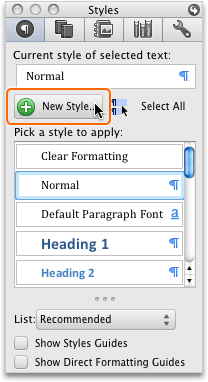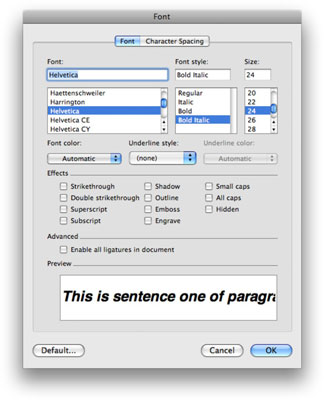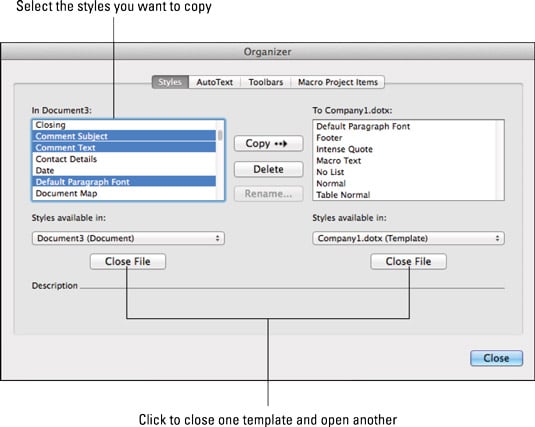

If you don't, the bullets or numbering in the list might be removed.Ĭhanging a style makes it easier to change the formatting of all text in your document that has that style applied. If you are applying a style to a list, make sure to select one of the list styles. On the Home tab, under Styles, click Change Quick Styles settings, and then click the style set that you want. Īfter you apply styles to paragraphs, headings, and other elements, you can quickly apply a set of coordinated styles to your document. To see more styles, point to a style, and then click. On the Home tab, under Styles, click the style that you want. Select the words, paragraph, list, or table that you want to apply a style to. This includes characteristics such as bullet style or number scheme, indentation, and any label text.

You can use table styles to quickly apply complex formatting with one click. This includes characteristics such as the text formatting of the header row, gridlines, and accent colors for rows and columns. Table styles determine the look of tables. For example, applying the Emphasis character style formats text as bold, italic, in an accent color. Each of these built-in styles combines formatting, such as bold, italic, and accent color, to provide a coordinated set of typographic designs. Several built-in character styles are available, such as Emphasis, Subtle Emphasis, and Intense Emphasis. Character styles do not include formatting that affects paragraph characteristics, such as line spacing, text alignment, indentation, and tab stops. Character styles usually control the formatting of smaller sections of text, for example, to make one word in a paragraph stand out.Ĭharacter styles contain formatting characteristics such as font name, size, color, bold, italic, underline, borders, and shading. Similarly, the List Paragraph style is applied to items in a list - for example, when you use the Bullets command to create a bulleted list.Ĭharacter styles also determine the look of the text in a document, but at the character level. However, it also controls all aspects of a paragraph's appearance, such as text alignment, tab stops, line spacing, and borders.īy default, the Normal paragraph style is applied to all text in a blank, new document. Paragraph styles are typically used to control the overall formatting of large sections of text, for example, the body of a newsletter or flyer.Ī paragraph style can include all the formatting definitions that a character style contains. When you apply a paragraph style to text, the paragraph style is applied to the whole paragraph. Paragraph styles determine the look of text in a document at the paragraph level. Four kinds of styles are available: paragraph, character, table, and list styles. You can apply formatting to text quickly and easily by using style in Word. See where styles are applied in a documentĭifferences between templates, themes, and Word styles On the Home tab, in the Styles group, Control+click or right-click the style you want to delete, and then click Remove from Quick Style Gallery. You can delete a custom from the Quick Style Gallery when you no longer need it.

Your new style is applied is added to the Styles group on the Home tab. Select the Add to Quick Style list check box, and then click OK. Select the formatting options that you want under Format. Select any additional options you want under Properties. In the Name box, type a name for the new style. On the Home tab, in the Styles group, click the Styles Pane button. You can create a new style and add it to the Quick Style list. The Quick Style list displays styles on the Home tab. You can specify that your new or modified style be added to the template that the current document is based on by selecting Add to template.įor easy access to a style while using Word, select Add to the Quick Style list. To apply a custom style or Quick Style set, on the Home tab, in the Styles group, click the Styles Pane button, and then choose a style in the Apply a style list.Ĭhange the settings that you want to modify, such as the font, in the Modify Style dialog box. On the Home tab, in the Styles group, click the style you want.

Select a location or text in your document and do one of the following:


 0 kommentar(er)
0 kommentar(er)
